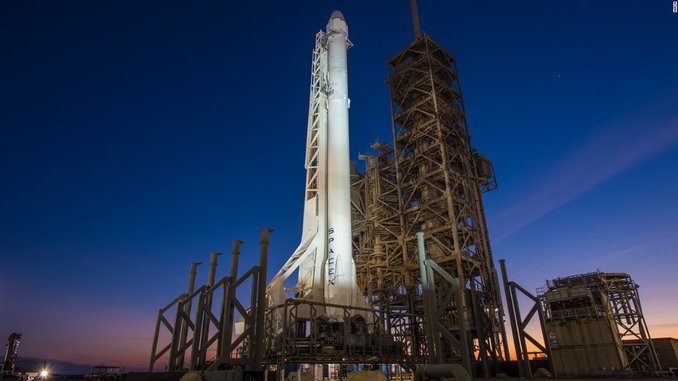
Today, 60 new satellites were launched by SpaceX. They will be visible if the weather permits.
“Due to the date and time of launch, conditions for visibility are not so good for Northwest Europe, where I am, nor indeed for the US, as they were in May,” Netherlands-based satellite tracker Marco Langbroek, who captured video of the Starlink train in the sky, told Space.com in an email today. “That’s because the new Starlink satellites have only a few days of evening passes over Europe and the U.S. before shifting into daylight for the near future,” he added.
However, Langbroek added: “Because they seem to aim for a lower operational orbital altitude (350 km) than the previous 60 did (those were inserted at 440 km, so already 100 km higher than what this new batch of 60 aims for, and eventually were brought to 550 km), I expect these new objects to stay relatively bright, i.e. naked eye objects.”
In May, there were other 60 satellites launched, so as them, these should be visible for a couple of nights.
If you want to see them, there are several websites that offer forecasts to help amateur observers identify which direction to look and when for any area.
The tracking site Heavens-Above.com here already has a Starlink Launch 2 page ready. You can visit this Starlink page on the site to see the orbit of the new satellites. Another site is N2Y0.com, which automatically picks up your coordinates from your browser to show when and where particular bright satellites (also the International Space Station, too) will be visible.
You can also use CalSky here. CalSky requires you to enter the satellite you’re looking to spot. You can type “Starlink” and click “Go!” to find your personal forecast under “Sightings Opportunities” for each satellite.
“For prospective observers, I would advise seeing whether Calsky of Heavens-Above issue predictions for your location and allow for several minutes uncertainty in the past time,” Langbroek said. “I expect them to be bright now they are still very low, but having binoculars handy would be a good idea. Make sure your eyes are dark-adapted (i.e. spent some 125 minutes in the dark at least, avoiding lamplight).”
The “train” view seen in May will likely only be visible over the next two nights, Langbroek said. So, you’ll want to be sure to act fast. By the time the satellites are again visible at night, they’ll be spread out in their final orbits and less of a sight, Langbroek added.
SpaceX launched the new Starlink satellites into a preliminary orbit of 174 miles (280 kilometers), but each of the 60 satellites is equipped with an ion engine to slowly raise its orbit to an altitude of about 217 miles (350 km).
Astronomers have are worrying that the satellites can endanger their observations of the night sky since SpaceX plans to launch at least 12,000 Starlink satellites for its mega constellation and planning to add another 30,000 satellites in the future. With other companies like Amazon, OneWeb and Telesat planning their own mega-constellations, even Langbroek has concerns.
“I do have concerns about these mega-constellations in low earth orbit. One is what it will do to our night sky – on a clear summer night, there is always one or several satellites visible almost at any given moment already,” Langbroek said. “With so many to be added over a short time span of only a few years, it will drastically alter how we experience our night sky: the old character of the night sky will basically be lost.”
Elon Musk, the SpaceX CEO, promises to reduce the brightness of the satellites.
The lifespan of the satellites is up to 5 years and at the end of a Starlink satellite’s mission, the satellite is designed to use its ion engine to deorbit itself and burn up in Earth’s atmosphere to avoid posing a space debris threat to other spacecraft, SpaceX has said.

Be the first to comment